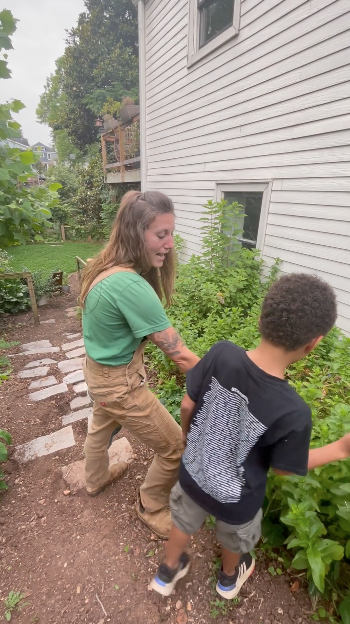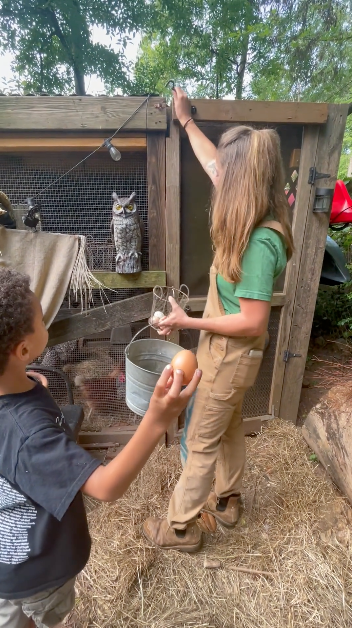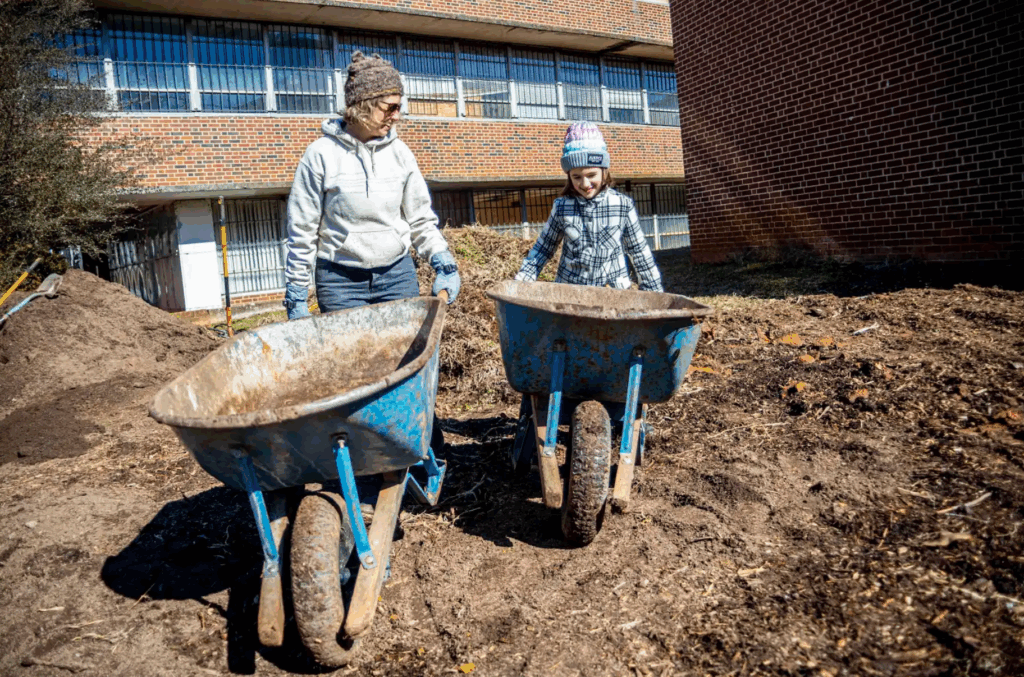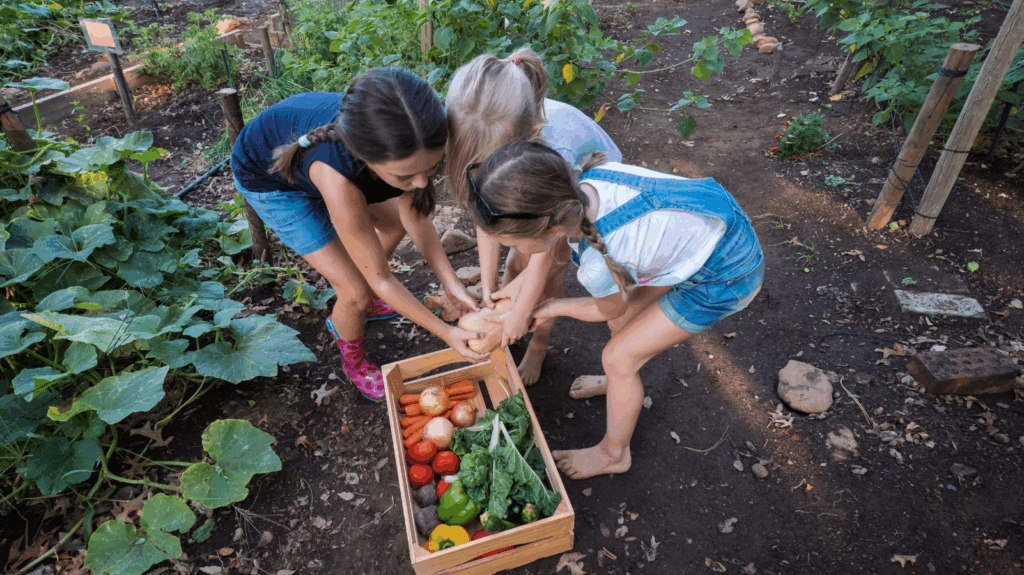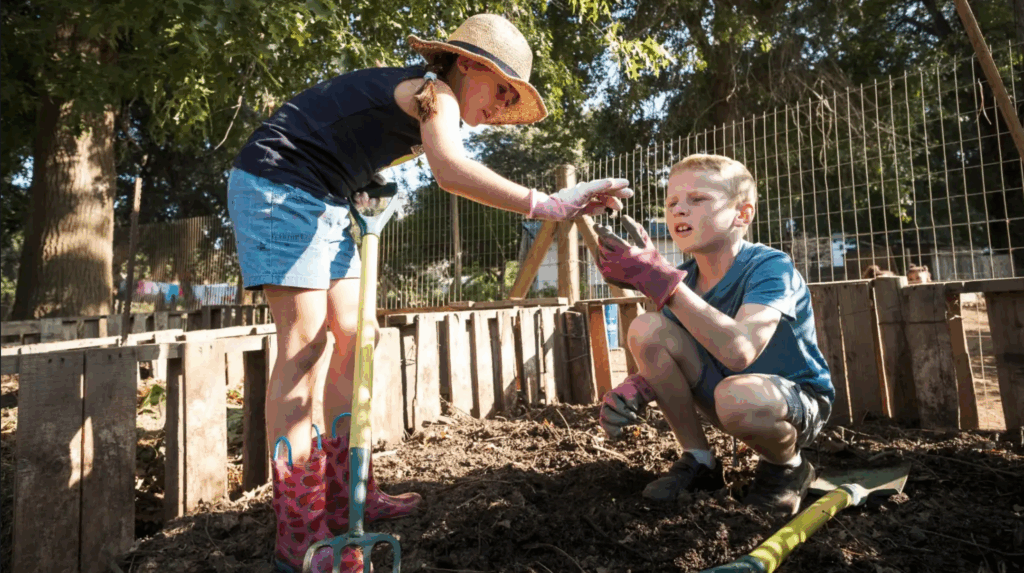When we think about building resilient landscapes, we often focus on soil health, water systems, and planting strategies. But one of the most powerful elements of a thriving ecosystem is community, and family is the closest community we have. When I had Zephyr 8 years ago, I was excited for the time when she’d be able to come into the garden with me, help with compost, learn about the soil, and sow the literal and figurative seeds. Kids don’t spend as much time outside as they used to! Spending time in the natural world helps to build good emotional and mental health, meet important developmental milestones, and improve attention span!
Permaculture isn’t just about designing gardens; it’s about creating regenerative ways of living and learning. Families of all shapes and sizes can step into this journey together, growing not only food but also deeper connections with each other and the natural world.
Why Permaculture is Perfect for Families
Children are natural observers and experimenters. They want to dig in the soil, touch leaves, watch insects, and ask endless questions. Permaculture provides a living classroom right outside the door. Instead of seeing “yard work” as a chore, families can reframe it as time to play, learn, and create together.
Some benefits include:
- Hands-on learning: Kids learn where food comes from, how ecosystems work, and why soil is alive. Learn to make compost tea, or grow mushrooms. The learning is infinite.
- Connection to nature: Spending time outdoors fosters curiosity, responsibility, and care for the Earth.
- Resilience at home: Families become less dependent on external systems by growing some of their own food and medicine.
- Shared purpose: Working on a garden project together strengthens communication and teamwork. Plus, you can see and enjoy the gifts the land gives you back.
Simple Ways to Start
Permaculture doesn’t require a big property or years of expertise. Families can begin right where they are, with small, doable steps that build over time:
- Grow a kitchen garden: Even a few pots of herbs or salad greens on a balcony provide daily lessons and fresh harvests.
- Create wildlife habitats: Build a pollinator garden, leave a brush pile for birds, or chop and drop to create habitat for insects as they overwinter.
- Catch and celebrate water: Place a rain barrel under a downspout, and let kids help track rainfall and watering. Install a rain garden and learn how intelligent water-loving plants can be.
- Compost together: Teach children the magic of turning kitchen scraps into soil, a visible cycle of renewal.
- Design spaces for play and rest: A hammock in the shade, a willow playhouse, or a winding path can make the garden a place of joy as much as productivity.
Growing Deeper Roots
Permaculture is about observing patterns and working with them. Families that grow together in this way learn to value patience, cycles, and cooperation—the same qualities that make ecosystems thrive. Each season brings new opportunities: planting in spring, harvesting in summer, prepping in fall, resting in winter. When children grow up experiencing these rhythms, they carry an embodied understanding of resilience into the rest of their lives.
An Invitation
At Shades of Green Permaculture, we believe every landscape—big or small—can become a place for families to grow in harmony with nature. Whether you’re planting your first seed or dreaming of a long-term homestead, the journey is richer when you share it with the people you love.
After all, permaculture isn’t just about gardens—it’s about cultivating relationships that nourish us, season after season.
